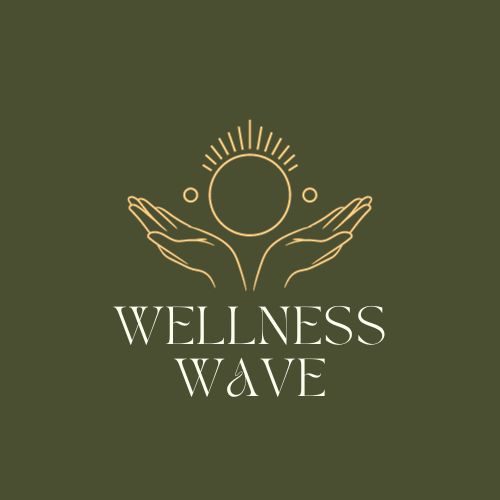In today’s consumer-driven world, where a quick-fix solution can often be bought with a simple click of a button, the idea of holistic practices that don’t require any purchases may seem like a distant concept. However, you might be surprised to learn that there are indeed practices that can help you achieve wellness and balance without emptying your wallet. From meditation and breathing exercises to self-care routines and gratitude journaling, this article explores the realm of holistic practices that emphasize simplicity and connection with oneself, offering a path towards well-being that is accessible to everyone.
Introduction
In a world filled with advertisements and consumerism, it can feel overwhelming to find holistic practices that don’t require any purchases. However, it is indeed possible to embark on a journey of self-care and well-being without spending a dime. This article will explore various holistic practices that can be easily incorporated into your daily life, helping you to enhance your physical, mental, and emotional well-being. From meditation and breathing exercises to yoga and mindfulness, we will delve into the benefits and techniques of each practice, demonstrating that you don’t need to break the bank to embark on a holistic lifestyle.
Meditation
Benefits of Meditation Without Purchases
Meditation is a practice that has been around for centuries and is known for its numerous benefits. Not only does it promote relaxation and reduce stress, but it also improves focus, enhances emotional well-being, and cultivates self-awareness. The best part is that meditation requires no purchases or expensive equipment. All you need is a quiet space and a willingness to dedicate a few minutes of your day to this practice.
Different Types of Meditation
There are various types of meditation, and each offers unique benefits. For beginners, mindfulness meditation is a great place to start. This form of meditation involves focusing your attention on the present moment, promoting a sense of calm and overall well-being. Other types of meditation include loving-kindness meditation, body scan meditation, and transcendental meditation. Exploring different techniques can help you find the one that resonates most with you.
Simple Meditation Techniques
If you’re new to meditation, it can be intimidating to get started. However, there are simple techniques that require no purchases and can easily be incorporated into your daily routine. One such technique is breath awareness meditation, where you focus on your breath, observing each inhale and exhale. Another technique is mantra meditation, where you repeat a word or phrase silently to yourself. These techniques can be practiced anywhere, anytime, making it easy to incorporate meditation into your life without any additional costs.

Breathing Exercises
Importance of Deep Breathing
Deep breathing is a powerful tool for relaxation and stress reduction. It helps activate the body’s relaxation response, which in turn calms the mind and soothes the nervous system. Deep breathing not only helps alleviate anxiety and tension but also improves lung function and increases oxygen flow throughout the body. The best part is that deep breathing can be done anywhere, at any time, without the need for any purchases.
Techniques for Deep Breathing Without Purchases
One of the simplest deep breathing techniques is diaphragmatic breathing. To practice this technique, sit or lie down in a comfortable position. Place one hand on your chest and the other on your abdomen. Take a slow, deep breath in through your nose, allowing your abdomen to rise as you fill your lungs with air. Exhale slowly through your mouth, feeling your abdomen sink back down. Repeat this process several times, focusing on the sensation of deep relaxation with each breath. Other techniques such as box breathing and alternate nostril breathing can also be practiced without any purchases, providing additional benefits.
Benefits of Deep Breathing
Deep breathing offers numerous benefits for both the body and mind. It can reduce stress and anxiety, lower blood pressure, improve digestion, boost the immune system, and enhance mental clarity and focus. By incorporating deep breathing into your daily routine, you can experience these benefits without spending a single penny.
Yoga
Introduction to Yoga
Yoga is an ancient practice that combines physical postures, breathing exercises, and meditation to promote overall well-being. It provides a holistic approach to health, focusing on the mind, body, and spirit connection. While some yoga classes or equipment may come with a cost, it is entirely possible to create a yoga practice without purchasing anything.
Beginner Yoga Poses Without Purchases
If you’re new to yoga or prefer to practice it on your own, there are several beginner poses you can try without any purchases. The mountain pose, downward-facing dog, child’s pose, and seated forward bend are just a few examples of poses that can be done with nothing more than a yoga mat or a comfortable surface. These poses help build strength, improve flexibility, and promote relaxation.
How to Create a Yoga Routine Without Purchases
Creating a yoga routine without purchases is as simple as setting aside a designated time and space for your practice. Start with a few minutes each day and gradually increase the duration as you become more comfortable. Use online videos or mobile apps for guidance and inspiration, as many platforms offer free yoga classes. Remember, the most important aspect of your yoga practice is your willingness to show up on your mat and connect with yourself.

Mindfulness
What is Mindfulness?
Mindfulness is the practice of bringing one’s attention to the present moment with kindness and curiosity. It involves being fully aware of the sensations, thoughts, and emotions that arise without judgment or attachment. Mindfulness cultivates a state of active, open attention, which allows for a deeper understanding of one’s experiences.
Practicing Mindfulness Without Purchases
Practicing mindfulness requires no purchases and can be done anywhere, anytime. Start by incorporating small mindful moments into your day. For example, take a few mindful breaths before starting a task, really savor your morning cup of tea or coffee, or observe the sights and sounds of nature during a walk. Additionally, you can engage in formal mindfulness practices such as body scan meditation or mindful eating, both of which provide opportunities to cultivate mindfulness without spending any money.
Benefits of Mindfulness
By incorporating mindfulness into your life, you can experience a range of benefits. Mindfulness reduces stress, improves focus and concentration, enhances emotional well-being, promotes better sleep, and fosters a greater sense of compassion and empathy. These benefits make mindfulness an invaluable practice for anyone looking to improve their overall quality of life.
Visualization
Using the Power of Visualization
Visualization is a practice that involves using your imagination to create vivid mental images. By visualizing positive scenarios or desired outcomes, you can tap into the power of your mind to manifest your goals and dreams. Visualization requires no purchases and can be a fun and effective tool for transformation.
Creating Visualizations Without Purchases
To create visualizations, find a quiet space where you can relax and close your eyes. Visualize your desired outcome in great detail, using all your senses to make it as vivid and real as possible. Imagine yourself achieving your goals, experiencing success, and feeling the emotions associated with your desires. Remember, there are no limits to what you can visualize, and the more you practice, the stronger your manifestation abilities will become.
Benefits of Visualization
Visualization has been shown to enhance motivation, boost self-confidence, reduce stress, and improve performance. By vividly picturing your desired outcomes, you can align your thoughts and emotions with what you want to create in your life. Visualization allows you to tap into the power of your subconscious mind, ultimately paving the way for positive change and personal growth.
Affirmations
What are Affirmations?
Affirmations are positive statements that are used to challenge negative or self-sabotaging thoughts. They help rewire your subconscious mind by replacing limiting beliefs with empowering ones. Affirmations require no purchases and can be a simple yet effective tool for self-improvement.
Creating Affirmations Without Purchases
To create affirmations, start by identifying the negative beliefs or thoughts you wish to replace. Turn those negative thoughts into positive, present-tense statements. For example, if you often doubt your abilities, you could affirm, “I am capable and confident in everything I do.” Write your affirmations down, say them aloud with conviction, and repeat them frequently. The power of affirmations lies in consistent repetition, so make it a daily practice without any additional expenses.
How to Use Affirmations Effectively
To use affirmations effectively, it’s important to believe in what you are affirming. Repeat your affirmations with confidence and conviction, visualizing them as already true. Incorporate them into your daily routine, such as saying them in the morning or during moments of self-doubt. Over time, affirmations can help reprogram your subconscious mind, boosting self-esteem, increasing self-belief, and ultimately aligning your thoughts and actions with your goals and aspirations.
Journaling
Benefits of Journaling Without Purchases
Journaling is a powerful tool for self-discovery, self-reflection, and personal growth. It allows you to explore your thoughts and emotions, gain clarity, and release stress. Journaling requires nothing more than a pen and paper or a digital equivalent, making it an accessible and cost-free practice.
Different Journaling Techniques
There are various journaling techniques you can explore, depending on your needs and preferences. Free writing involves writing without any specific structure or goal, allowing your thoughts to flow freely onto the page. Gratitude journaling involves reflecting on and writing down things you are grateful for, fostering a positive mindset. Other techniques include reflective journaling, goal-setting journaling, and stream of consciousness journaling. Experiment with different techniques to find the style that resonates most with you.
Tips for Effective Journaling
To make the most of your journaling practice, set aside dedicated time each day for writing. Find a quiet and comfortable space where you can be alone with your thoughts. Write honestly and authentically, without judgment or censorship. Remember, there are no right or wrong answers in your journal; it is a safe space for self-expression. Finally, be consistent with your journaling practice, even if it’s just for a few minutes each day. The true power of journaling lies in the accumulation of your thoughts and emotions over time.
Gratitude Practice
Benefits of Gratitude Practice
Cultivating gratitude is a powerful practice that can significantly enhance your well-being and overall happiness. By focusing on the positive aspects of your life, you shift your mindset from one of lack to one of abundance. Gratitude practice has been linked to increased optimism, improved relationships, reduced stress levels, and a greater sense of satisfaction with life, all without requiring any purchases.
Ways to Practice Gratitude Without Purchases
Practicing gratitude can take many forms, and you don’t need to spend any money to do so. One simple practice is keeping a gratitude journal, where you write down things you are grateful for each day. Another option is expressing gratitude verbally or in writing to the people in your life who have made a positive impact. Additionally, you can engage in gratitude meditation, where you focus your thoughts on the things you appreciate. Whether it’s a beautiful sunset, a thoughtful gesture, or your own personal strengths, practicing gratitude without purchases can help foster a deep sense of contentment and appreciation.
Tips for Maintaining a Gratitude Practice
To maintain a gratitude practice, consistency is key. Set a regular time each day to reflect on and express gratitude. Make it a habit to notice the small moments of joy and appreciate the blessings in your life. As with any new practice, start small and gradually increase your focus on gratitude. Consider getting a gratitude buddy to share daily reflections with, enhancing both accountability and connection. By making gratitude a regular part of your life, you can cultivate a positive mindset and experience greater joy and fulfillment.
Self-Reflection
Why Self-Reflection is Important
Self-reflection is a practice that involves looking inward, examining your thoughts, emotions, and actions, and gaining insights into yourself. It allows you to learn from your experiences, improve self-awareness, and make conscious choices aligned with your values and aspirations. Self-reflection doesn’t require purchases; it only requires your willingness to look within and explore your inner landscape.
Methods for Self-Reflection Without Purchases
Self-reflection can be practiced in various ways, depending on what resonates with you. Journaling, as mentioned earlier, is an effective tool for self-reflection. Taking quiet walks in nature, engaging in mindfulness practices, and engaging in deep conversations with trusted friends or mentors are also useful methods. Genuine self-reflection involves creating space for introspection and actively seeking to understand yourself better without relying on external purchases or distractions.
Incorporating Self-Reflection Into Daily Life
To incorporate self-reflection into your daily life, set aside dedicated time to engage in introspective practices. Whether it’s a few minutes in the morning or a longer period during the day, create a routine that works for you. Use prompts or guiding questions to delve deeper into your thoughts and emotions. Make self-reflection a mindful practice, fully present with yourself and open to learning and growth. By consistently incorporating self-reflection into your life, you can deepen your understanding of yourself and make meaningful changes that align with your values and aspirations.
Conclusion
In conclusion, holistic practices that don’t require any purchases are plentiful and accessible to everyone. Meditation, breathing exercises, yoga, mindfulness, visualization, affirmations, journaling, gratitude practice, and self-reflection are all valuable tools for enhancing your well-being. By incorporating these practices into your daily life, you can experience numerous benefits for your physical, mental, and emotional health without having to spend any money. Remember, the most important investment you can make is the time and effort you dedicate to yourself. So go ahead and embark on your holistic journey, knowing that it doesn’t require purchases to nourish your mind, body, and soul.

